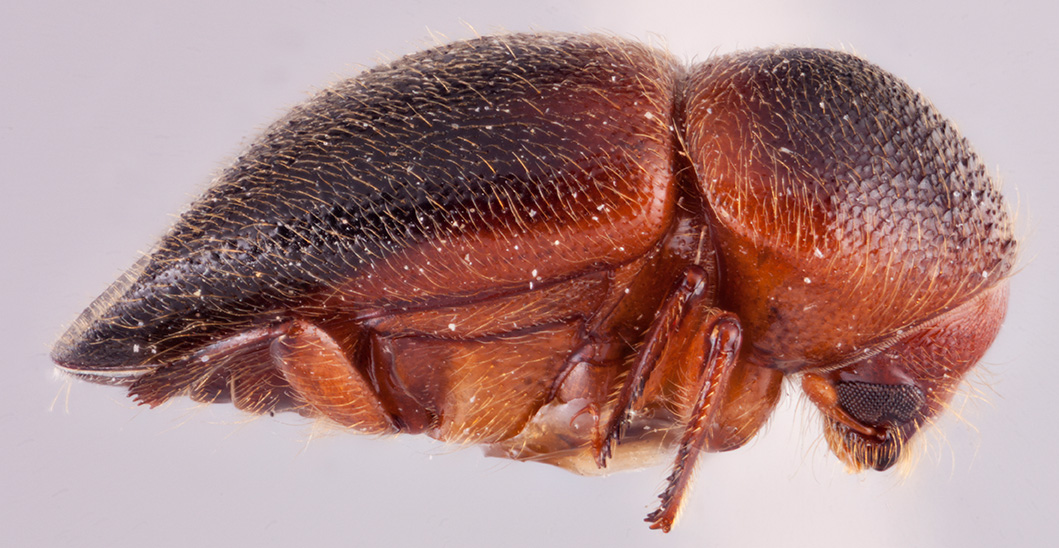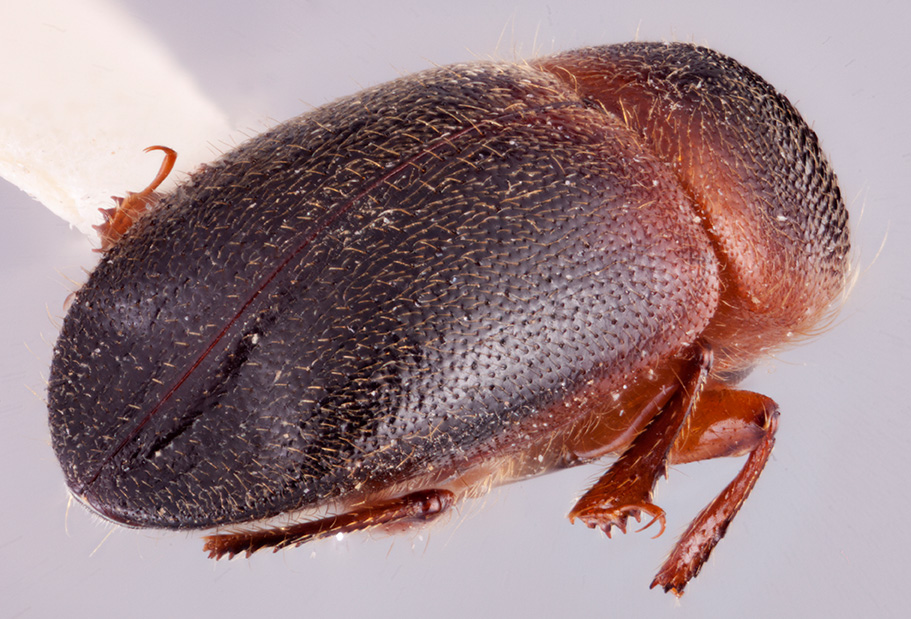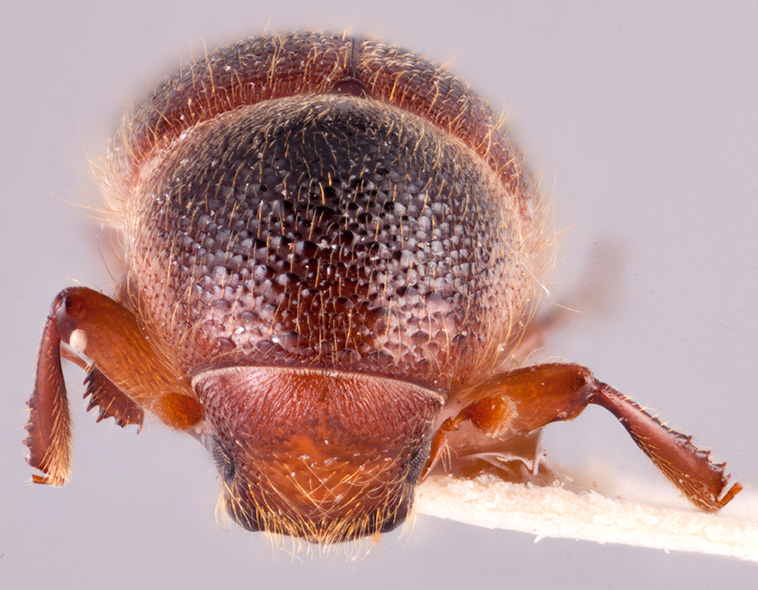Ancipitis punctatissimus
|
Ancipitis punctatissimus lateral; R.K. Osborn |
|
Ancipitis punctatissimus dorsal; R.K. Osborn |
|
Ancipitis punctatissimus declivity; R.K. Osborn |
|
Ancipitis punctatissimus frontal; R.K. Osborn |
Taxonomic history
Xyleborus punctatissimus Eichhoff, 1880: 189.
Leptoxyleborus punctatissimus (Eichhoff): Wood and Bright, 1992: 660.
Ancipitis punctatissimus (Eichhoff): Beaver et al., 2014: 26.
Synonyms
Xyleborus spatulatus Blandford, 1896b: 218. Kalshoven, 1959a: 95.
Diagnosis
The largest Ancipitis species, 4.9−5.4 mm long (mean = 5.16 mm; n = 5); 2.08−2.41 times as long as wide. This species is distinguished by its large size; declivital interstriaeinterstria:
longitudinal spaces along the elytra between the striae, which is not as<br />
impressed and bear smaller punctures.
 triseriate, with a mix of short erecterect:
triseriate, with a mix of short erecterect:
pertaining to setae that have their apices directed away from the body and appear straight
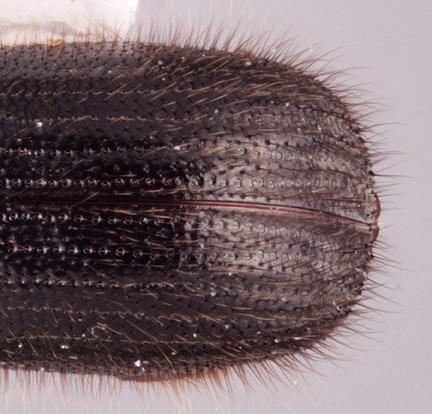 and recumbentrecumbent:
and recumbentrecumbent:
pertaining to setae that are flat against the cuticle
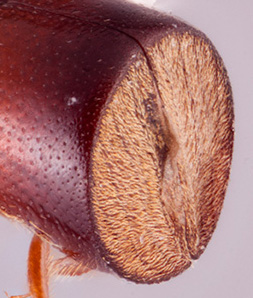 hair-like setaeseta:
hair-like setaeseta:
small hair-like or scale-like structure
.
May be confused with
Ancipitis puer and Leptoxyleborus sordicauda
Distribution
China (Yunnan), Indonesia (Java, Sumatra), East & West Malaysia, Thailand
Host plants
recorded from four different families of angiosperm trees and from Pinus merkusii (Pinaceae) (Browne 1961bBrowne 1961b:
Browne FG. 1961b. The biology of Malayan Scolytidae and Platypodidae. Malayan Forest Records 22: 1-255., Ohno 1990Ohno 1990:
Ohno S. 1990. The Scolytidae and Platypodidae (Coleoptera) from Borneo found in logs at Nagoya port 1. Research Bulletin of the Plant Protection Service, Japan 26: 83-94., Schedl 1969aSchedl 1969a:
Schedl KE. 1969a. Bark-beetles and pin-hole borers (Scolytidae and Platypodidae) intercepted from imported logs in Japanese ports, III. 258. Contribution to the morphology and taxonomy of the Scolytoidea. Kontyucirc; 37: 202-219.)
Remarks
This species occurs on both angiosperm and conifer hosts.
DNA data
specimens not available for sequencing

